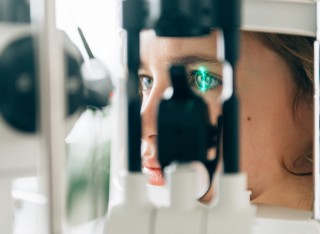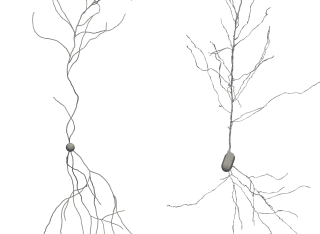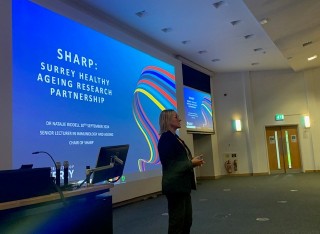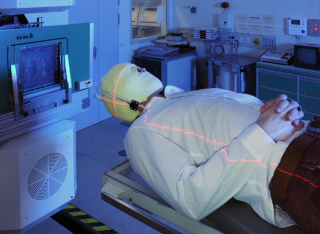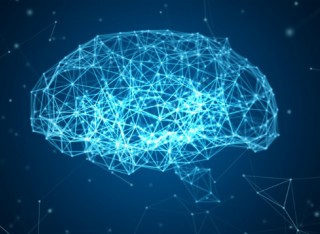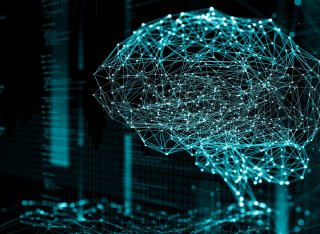
Dr Roman Bauer
About
Biography
Roman received his Bachelor's and Master's Degree in Computational Science and Engineering from ETH Zuerich, Switzerland. Afterwards, he did his doctoral studies at the Institute for Neuroinformatics (INI) at ETH Zürich and University of Zürich, working on simulations of cortical development. He then joined Newcastle University in September 2013 as a postdoctoral research associate and afterwards started his MRC fellowship project in September 2016 as an independent principal investigator. In June 2018 he took up an EPSRC UKRI Innovation Fellowship at the School of Computing and a joint affiliation with the Institute of Genetic Medicine, both at Newcastle University. In August 2020 he then became a lecturer at the Department of Computer Science, University of Surrey.
University roles and responsibilities
- Programme Lead for Computing with Business Management (BSc Hons; Nov 2023 - Current)
Previous roles
News
ResearchResearch interests
Roman Bauer's research focus on the computational modelling and analysis of biological dynamics, in particular those of the brain. He devises and analyses computational and statistical models of how tissue evolves (e.d. during development, degeneration or other types of processing, e.g. cryopreservation), in order to better understand the system dynamics. These models incorporate the interaction between cellular processes and physical laws of the extracellular environment. Since such a detailed approach can be very demanding from a computational point of view, his research also involves modern computing approaches and IT-related collaboration.
Research projects
Computational modelling of cryopreservation of biological tissueWe employ innovative computational modelling to optimise cryopreservation protocols.
Computational modelling of retinal developmentWe use agent-based computational modelling and use various biological data to model the development of the retina.
Neural network self-organizationWe make use of advanced computational modelling and analysis techniques to better understand and leverage how neural circuits self-organise and produce function.
AI for healthWe use AI methods to model how the brain changes during development and ageing, in health as well as in disease. To inform such modelling, we make use of various data, including retinal images, neuroimaging data and EEG data.
Research collaborations
BioDynaMo collaboration. This is an international collaboration in Computational Biology. More information can be found at www.biodynamo.org as well as www.romanbauer.net.
Research interests
Roman Bauer's research focus on the computational modelling and analysis of biological dynamics, in particular those of the brain. He devises and analyses computational and statistical models of how tissue evolves (e.d. during development, degeneration or other types of processing, e.g. cryopreservation), in order to better understand the system dynamics. These models incorporate the interaction between cellular processes and physical laws of the extracellular environment. Since such a detailed approach can be very demanding from a computational point of view, his research also involves modern computing approaches and IT-related collaboration.
Research projects
We employ innovative computational modelling to optimise cryopreservation protocols.
We use agent-based computational modelling and use various biological data to model the development of the retina.
We make use of advanced computational modelling and analysis techniques to better understand and leverage how neural circuits self-organise and produce function.
We use AI methods to model how the brain changes during development and ageing, in health as well as in disease. To inform such modelling, we make use of various data, including retinal images, neuroimaging data and EEG data.
Research collaborations
BioDynaMo collaboration. This is an international collaboration in Computational Biology. More information can be found at www.biodynamo.org as well as www.romanbauer.net.
Teaching
I teach on the BSc in Computer Science, BSc in Computing with Business Management programmes and on the MEng in Computer Science.
In particular, I teach on the following modules:
Advanced Algorithms (COM2031) to MEng & BSc students (FHEQ Level 7 & 5) – taught on the MEng and BSc in Computer Science. Module topics include Algorithm Design Approaches, Network Flow Problems and others.
Data Structures and Algorithms (COM1029) to year 1 undergraduate students (FHEQ Level 4) – taught on the BSc in Computer Science, MEng in Computer Science and BSc in Computing with Business Management. Module topics include Trees, Graphs, Algorithm Efficiency and others.
Publications
Highlights
Cogno, N., Bauer, R. and Durante, M., 2024. Mechanistic model of radiotherapy-induced lung fibrosis using coupled 3D agent-based and Monte Carlo simulations. Communications Medicine, 4(1), p.16.
Breitwieser, L., Hesam, A., Montigny, J., Vavourakis, V., Iosif, A., Jennings, J., Kaiser, M., Manca, M., Di Meglio, A. and Al-Ars, Z., Rademakers, F., Bauer, R. 2021. BioDynaMo: an agent-based simulation platform for scalable computational biology research. Bioinformatics.
Bauer, R., Clowry, G.J. and Kaiser, M., 2021. Creative destruction: a basic computational model of cortical layer formation. Cerebral Cortex, 31(7), pp.3237-3253.
Pegah Kassraian-Fard, Michael Pfeiffer, Roman Bauer. A generative growth model for thalamocortical axonal branching in primary visual cortex. PLoS Computational Biology, 2020
Peraza, L.R., Díaz-Parra, A., Kennion, O., Moratal, D., Taylor, J.P., Kaiser, M., Bauer, R. and Alzheimer's Disease Neuroimaging Initiative, 2019. Structural connectivity centrality changes mark the path toward Alzheimer's disease. Alzheimer's & Dementia: Diagnosis, Assessment & Disease Monitoring, 11, pp.98-107.
Preterm births have been associated with altered neurological development for neonatal infants, this has been implicated in certain neurodevelopmental conditions in later life. Advances in brain imaging methods, such as Magnetic Resonance Imaging, have allowed for the analysis of physical connectivity of brain matter in infants shortly after birth. However, commonly used methods of investigating such data rely on a brain network analysis, traditionally based on graph-theoretical approaches, which may fail to capture complex patterns involving both local and global network structures and spatial information. Furthermore, many previous studies of infant brain data rely on a priori selection of specific graph connectivity measures. We propose employing machine learning models such as logistic regression and Graph Neural Networks to provide a data-driven approach for classifying preterm and term brain networks at birth. We utilize fuzzy logic, and explainability methods including Shapley Additive Explanations to identify influential regions and connections in decision making. In our analysis, brain regions are represented as spatially embedded nodes, with edges representing strength of structural connections between areas. Using this setup, our model achieves a binary classification accuracy of 88.57%. This performance is further enhanced using a fuzzy boundary between preterm and term classes, achieving an accuracy of 96.19%. This demonstrates that the model can be assisted particularly by adding context to 'near-term' born infant cases. These analyses highlight important connections, and key nodes including deep brain structures which are broadly consistent with biological literature.
The concept of antifragility pertains to the benefit derived from the variability inherent to a dynamical system, particularly in response to perturbations. This chapter briefly introduces the properties of antifragility in natural systems. These will serve as guidelines to detect, analyse, and model antifragile behavior in various natural systems.
This chapter introduces interventional antifragility as the externally-driven reaching dynamics of a natural dynamic system. It describes the benefit derived from input distribution unevenness, based on the emergent system dynamics in a closed loop with a signal driving the system behavior towards prescribed dynamics. We consider methods for the detection, analysis, modelling, and control of cancer therapy and neural disease systems antifragility.
This chapter introduces evolutionary antifragility as the time-scale interaction characteristics of a natural dynamic system. It describes the benefit derived from input distribution unevenness, based on the emergent system dynamics and its uncertain and volatile interactions with the operating environment described by unknown disturbances. We consider methods for the detection, analysis, and modelling of cancer, environmental, microbiota, and social systems antifragility.
This chapter introduces ecological antifragility as the innate characteristic of a natural dynamic system. It describes the benefit derived from input distribution unevenness, based on the convexity of the response function of the system under uncertainty and volatility. We consider methods for the detection, analysis, and modelling of cancer, ecosystem, and neuronal systems antifragility.
This chapter concludes our interdisciplinary endeavor into natural systems antifragility. Be it ecological, evolutionary, or interventional, antifragility expands and consolidates the typical analysis and modelling of natural systems. We hereby offer the main concepts that define antifragility levels in natural systems as well as the new research avenues our insights offer.
Traditional machine learning methods heavily rely on large amounts of labelled data for effective generalisation, posing a challenge in few-shot learning scenarios. In many real-world applications, acquiring large amounts of training data can be difficult or impossible. This paper presents an efficient and explainable method for few-shot learning from images using inductive logic programming (ILP). ILP utilises logical representations and reasoning to capture complex relationships and generalise from sparse data. We demonstrate the effectiveness of our proposed ILP-based approach through an experimental evaluation focused on detecting neurodegenerative diseases from fundus images. By extending our previous work on neurodegenerative disease detection, including Alzheimers disease, Parkinsons disease, and vascular dementia disease, we achieve improved explainability in identifying these diseases using fundus images collected from the UK Biobank dataset. The logical representation and reasoning inherent in ILP enhances the interpretability of the detection process. The results highlight the efficacy of ILP in few-shot learning scenarios, showcasing its remarkable generalisation performance compared to a range of other machine learning algorithms. This research contributes to the field of few-shot learning using ILP and paves the way for addressing challenging real-world problems.
Unlike most computer vision approaches, which depend on hundreds or thousands of training images, humans can typically learn from a single visual example. Humans achieve this ability using background knowledge. Rule-based machine learning approaches such as Inductive Logic Programming (ILP) provide a framework for incorporating domain specific background knowledge. These approaches have the potential for human-like learning from small data or even one-shot learning, i.e. learning from a single positive example. By contrast, statistics based computer vision algorithms, including Deep Learning, have no general mechanisms for incorporating background knowledge. This paper presents an approach for one-shot rule learning called One-Shot Hypothesis Derivation (OSHD) based on using a logic program declarative bias. We apply this approach to two challenging human-like computer vision tasks: 1) Malayalam character recognition and 2) neurological diagnosis using retinal images. We compare our results with a state-of-the-art Deep Learning approach, called Siamese Network, developed for one-shot learning. The results suggest that our approach can generate human-understandable rules and outperforms the deep learning approach with a significantly higher average predictive accuracy.
Understanding how genetically encoded rules drive and guide complex neuronal growth processes is essential to comprehending the brain's architecture, and agent-based models (ABMs) offer a powerful simulation approach to further develop this understanding. However, accurately calibrating these models remains a challenge. Here, we present a novel application of Approximate Bayesian Computation (ABC) to address this issue. ABMs are based on parametrized stochastic rules that describe the time evolution of small components -- the so-called agents -- discretizing the system, leading to stochastic simulations that require appropriate treatment. Mathematically, the calibration defines a stochastic inverse problem. We propose to address it in a Bayesian setting using ABC. We facilitate the repeated comparison between data and simulations by quantifying the morphological information of single neurons with so-called morphometrics and resort to statistical distances to measure discrepancies between populations thereof. We conduct experiments on synthetic as well as experimental data. We find that ABC utilizing Sequential Monte Carlo sampling and the Wasserstein distance finds accurate posterior parameter distributions for representative ABMs. We further demonstrate that these ABMs capture specific features of pyramidal cells of the hippocampus (CA1). Overall, this work establishes a robust framework for calibrating agent-based neuronal growth models and opens the door for future investigations using Bayesian techniques for model building, verification, and adequacy assessment.
Abstract Motivation Agent-based modeling is an indispensable tool for studying complex biological systems. However, existing simulation platforms do not always take full advantage of modern hardware and often have a field-specific software design. Results We present a novel simulation platform called BioDynaMo that alleviates both of these problems. BioDynaMo features a modular and high-performance simulation engine. We demonstrate that BioDynaMo can be used to simulate use cases in: neuroscience, oncology and epidemiology. For each use case, we validate our findings with experimental data or an analytical solution. Our performance results show that BioDynaMo performs up to three orders of magnitude faster than the state-of-the-art baselines. This improvement makes it feasible to simulate each use case with one billion agents on a single server, showcasing the potential BioDynaMo has for computational biology research. Availability and implementation BioDynaMo is an open-source project under the Apache 2.0 license and is available at www.biodynamo.org. Instructions to reproduce the results are available in the supplementary information. Supplementary information Available at https://doi.org/10.5281/zenodo.5121618.
BackgroundMechanistic modelling of normal tissue toxicities is unfolding as an alternative to the phenomenological normal tissue complication probability models. The latter, currently used in the clinics, rely exclusively on limited patient data and neglect spatial dose distribution information. Among the various approaches, agent-based models are appealing as they provide the means to include patient-specific parameters and simulate long-term effects in complex systems. However, Monte Carlo tools remain the state-of-the-art for modelling radiation transport and provide measurements of the delivered dose with unmatched precision.MethodsIn this work, we develop and characterize a coupled 3D agent-based – Monte Carlo model that mechanistically simulates the onset of the radiation-induced lung fibrosis in an alveolar segment. To the best of our knowledge, this is the first such model.ResultsOur model replicates extracellular matrix patterns, radiation-induced lung fibrosis severity indexes and functional subunits survivals that show qualitative agreement with experimental studies and are consistent with our past results. Moreover, in accordance with experimental results, higher functional subunits survival and lower radiation-induced lung fibrosis severity indexes are achieved when a 5-fractions treatment is simulated. Finally, the model shows increased sensitivity to more uniform protons dose distributions with respect to more heterogeneous ones from photon irradiation.ConclusionsThis study lays thus the groundwork for further investigating the effects of different radiotherapeutic treatments on the onset of radiation-induced lung fibrosis via mechanistic modelling.
Understanding how genetically encoded rules drive and guide complex neuronal growth processes is essential to comprehending the brain's architecture, and agent-based models (ABMs) offer a powerful simulation approach to further develop this understanding. However, accurately calibrating these models remains a challenge. Here, we present a novel application of Approximate Bayesian Computation (ABC) to address this issue. ABMs are based on parametrized stochastic rules that describe the time evolution of small components-the so-called agents-discretizing the system, leading to stochastic simulations that require appropriate treatment. Mathematically, the calibration defines a stochastic inverse problem. We propose to address it in a Bayesian setting using ABC. We facilitate the repeated comparison between data and simulations by quantifying the morphological information of single neurons with so-called morphometrics and resort to statistical distances to measure discrepancies between populations thereof. We conduct experiments on synthetic as well as experimental data. We find that ABC utilizing Sequential Monte Carlo sampling and the Wasserstein distance finds accurate posterior parameter distributions for representative ABMs. We further demonstrate that these ABMs capture specific features of pyramidal cells of the hippocampus (CA1). Overall, this work establishes a robust framework for calibrating agent-based neuronal growth models and opens the door for future investigations using Bayesian techniques for model building, verification, and adequacy assessment.
Computational models are not just appealing because they can simulate and predict the development of biological phenomena across multiple spatial and temporal scales, but also because they can integrate information from well-established in vitro and in vivo models and test new hypotheses in cancer biomedicine. Agent-based models and simulations are especially interesting candidates among computational modeling procedures in cancer research due to the capability to, for instance, recapitulate the dynamics of neoplasia and tumor - host interactions. Yet, the absence of methods to validate the consistency of the results across scales can hinder adoption by turning fine-tuned models into black boxes. This review compiles relevant literature that explores strategies to leverage high-fidelity simulations of multi-scale, or multi-level, cancer models with a focus on verification approached as simulation calibration. We consolidate our review with an outline of modern approaches for agent-based models' validation and provide an ambitious outlook toward rigorous and reliable calibration.
Death of photoreceptors is a common cause of age-related and inherited retinal dystrophies, and thus their replenishment from renewable stem cell sources is a highly desirable therapeutic goal. Human pluripotent stem cells provide a useful cell source in view of their limitless self-renewal capacity and potential to not only differentiate into cells of the retina but also self-organize into tissue with structure akin to the human retina as part of three-dimensional retinal organoids. Photoreceptor precursors have been isolated from differentiating human pluripotent stem cells through application of cell surface markers or fluorescent reporter approaches and shown to have a similar transcriptome to fetal photoreceptors. In this study, we investigated the transcriptional profile of CRX-expressing photoreceptor precursors derived from human pluripotent stem cells and their engraftment capacity in an animal model of retinitis pigmentosa (Pde6brd1), which is characterized by rapid photoreceptor degeneration. Single cell RNA-Seq analysis revealed the presence of a dominant cell cluster comprising 72% of the cells, which displayed the hallmarks of early cone photoreceptor expression. When transplanted subretinally into the Pde6brd1 mice, the CRX+ cells settled next to the inner nuclear layer and made connections with the inner neurons of the host retina, and approximately one-third of them expressed the pan cone marker, Arrestin 3, indicating further maturation upon integration into the host retina. Together, our data provide valuable molecular insights into the transcriptional profile of human pluripotent stem cells-derived CRX+ photoreceptor precursors and indicate their usefulness as a source of transplantable cone photoreceptors.
Laminins are heterotrimeric glycoproteins of the extracellular matrix. Eleven different laminin chains have been identified in vertebrates. They are ubiquitously expressed in the human body, with a distinct tissue distribution. Laminin expression in neural retina and their functional role during human retinogenesis is still unknown. This study investigated the laminin expression in human developing and adult retina, showing laminin alpha 1, alpha 5, beta 1, beta 2 and gamma 1 to be predominantly expressed in Bruch's membrane and the inner limiting membrane. Laminin-332 and laminin gamma 3 expression were mainly observed in the neural retina during retinal histogenesis. These expression patterns were largely conserved in pluripotent stem cell-derived retinal organoids. Blocking of laminin gamma 3 function in retinal organoids resulted in the disruption of laminar organisation and synapse formation, the loss of photoreceptor organisation and retinal ganglion cells. Our data demonstrate a unique temporal and spatial expression for laminins and reveal a novel role for laminin gamma 3 during human retinogenesis.
The differentiation of Lewy body dementia from other common dementia types clinically is difficult, with a considerable number of cases only being found post-mortem. Consequently, there is a clear need for inexpensive and accurate diagnostic approaches for clinical use. Electroencephalography (EEG) is one potential candidate due to its relatively low cost and non-invasive nature. Previous studies examining the use of EEG as a dementia diagnostic have focussed on the eyes closed (EC) resting state; however, eyes open (EO) EEG may also be a useful adjunct to quantitative analysis due to clinical availability. We extracted spectral properties from EEG signals recorded under research study protocols (1024 Hz sampling rate, 10:5 EEG layout). The data stems from a total of 40 dementia patients with an average age of 74.42, 75.81 and 73.88 years for Alzheimer's disease (AD), dementia with Lewy bodies (DLB) and Parkinson's disease dementia (PDD), respectively, and 15 healthy controls (HC) with an average age of 76.93 years. We utilised k-nearest neighbour, support vector machine and logistic regression machine learning to differentiate between groups utilising spectral data from the delta, theta, high theta, alpha and beta EEG bands. We found that the combination of EC and EO resting state EEG data significantly increased inter-group classification accuracy compared to methods not using EO data. Secondly, we observed a distinct increase in the dominant frequency variance for HC between the EO and EC state, which was not observed within any dementia subgroup. For inter-group classification, we achieved a specificity of 0.87 and sensitivity of 0.92 for HC vs dementia classification and 0.75 specificity and 0.91 sensitivity for AD vs DLB classification, with a k-nearest neighbour machine learning model which outperformed other machine learning methods. The findings of our study indicate that the combination of both EC and EO quantitative EEG features improves overall classification accuracy when classifying dementia types in older age adults. In addition, we demonstrate that healthy controls display a definite change in dominant frequency variance between the EC and EO state. In future, a validation cohort should be utilised to further solidify these findings.
Gene regulatory networks represent collections of regulators that interact with each other and with other molecules to govern gene expression. Biological signalling networks model how signals are transmitted and how activities are coordinated in the cell. The study of the structure of such networks in complex diseases such as cancer can provide insights into how they function, and consequently, suggest suitable treatment approaches. Here, we explored such topological characteristics in the example of a mitogen-activated protein kinase (MAPK) signalling network derived from published studies in cancer. We employed well-established techniques to conduct network analyses, and collected information on gene function as obtained from large-scale public databases. This allowed us to map topological and functional relationships, and build hypotheses on this network's functional consequences. In particular, we find that the topology of this MAPK network is highly non-random, modular and robust. Moreover, analysis of the network's structure indicates the presence of organisational features of cancer hallmarks, expressed in an asymmetrical manner across communities of the network. Finally, our results indicate that the organisation of this network renders it problematic to use treatment approaches that focus on a single target. Our analysis suggests that multi-target attacks in a well-orchestrated manner are required to alter how the network functions. Overall, we propose that complex network analyses combined with pharmacological insights will help inform on future treatment strategies, exploiting structural vulnerabilities of signalling and regulatory networks in cancer.
The effectiveness of chemotherapy in cancer cell regression is often limited by drug resistance, toxicity, and neoplasia heterogeneity. However, due to the significant complexities entailed by the many cancer growth processes, predicting the impact of interference and symmetry-breaking mechanisms is a difficult problem. To quantify and understand more about cancer drug pharmacodynamics, we combine in vitro with in silico cancer models. The anti-proliferative action of selected cytostatics is interrogated on human colorectal and breast adenocarcinoma cells, while an agent-based computational model is employed to reproduce experiments and shed light on the main therapeutic mechanisms of each chemotherapeutic agent. Multiple drug administration scenarios on each cancer cell line are simulated by varying the drug concentration, while a Bayesian-based method for model parameter optimisation is employed. Our proposed procedure of combining in vitro cancer drug screening with an in silico agent-based model successfully reproduces the impact of chemotherapeutic drugs in cancer growth behaviour, while the mechanisms of action of each drug are characterised through model-derived probabilities of cell apoptosis and division. We suggest that our approach could form the basis for the prospective generation of experimentally-derived and model-optimised pharmacological variables towards personalised cancer therapy.
Injections of neural tracers into many mammalian neocortical areas reveal a common patchy motif of clustered axonal projections. We studied in simulation a mathematical model for neuronal development in order to investigate how this patchy connectivity could arise in layer II/III of the neocortex. In our model, individual neurons of this layer expressed the activator–inhibitor components of a Gierer–Meinhardt reaction–diffusion system. The resultant steady-state reaction–diffusion pattern across the neuronal population was approximately hexagonal. Growth cones at the tips of extending axons used the various morphogens secreted by intrapatch neurons as guidance cues to direct their growth and invoke axonal arborization, so yielding a patchy distribution of arborization across the entire layer II/III. We found that adjustment of a single parameter yields the intriguing linear relationship between average patch diameter and interpatch spacing that has been observed experimentally over many cortical areas and species. We conclude that a simple Gierer–Meinhardt system expressed by the neurons of the developing neocortex is sufficient to explain the patterns of clustered connectivity observed experimentally.
The pathophysiological process of Alzheimer's disease is thought to begin years before clinical decline, with evidence suggesting prion-like spreading processes of neurofibrillary tangles and amyloid plaques. Using diffusion magnetic resonance imaging data from the Alzheimer's Disease Neuroimaging Initiative database, we first identified relevant features for dementia diagnosis. We then created dynamic models with the Nathan Kline Institute-Rockland Sample database to estimate the earliest detectable stage associated with dementia in the simulated disease progression. A classifier based on centrality measures provides informative predictions. Strength and closeness centralities are the most discriminative features, which are associated with the medial temporal lobe and subcortical regions, together with posterior and occipital brain regions. Our model simulations suggest that changes associated with dementia begin to manifest structurally at early stages. Our analyses suggest that diffusion magnetic resonance imaging–based centrality measures can offer a tool for early disease detection before clinical dementia onset.
Many real-world networks contain highly connected nodes called hubs. Hubs are often crucial for network function and spreading dynamics. However, classical models of how hubs originate during network development unrealistically assume that new nodes attain information about the connectivity (for example the degree) of existing nodes. Here, we introduce hub formation through nonlinear growth where the number of nodes generated at each stage increases over time and new nodes form connections independent of target node features. Our model reproduces variation in number of connections, hub occurrence time, and rich-club organization of networks ranging from protein–protein, neuronal and fibre tract brain networks to airline networks. Moreover, nonlinear growth gives a more generic representation of these networks compared with previous preferential attachment or duplication–divergence models. Overall, hub creation through nonlinear network expansion can serve as a benchmark model for studying the development of many real-world networks.
Programming has become a significant part of connecting theoretical development and scientific application computation. Computer programs and processes that take into account the goals and needs of the user meet with the greatest success, so it behooves software engineers to consider the human element inherent in every line of code they write. Research Anthology on Recent Trends, Tools, and Implications of Computer Programming is a vital reference source that examines the latest scholarly material on trends, techniques, and uses of various programming applications and examines the benefits and challenges of these computational developments. Highlighting a range of topics such as coding standards, software engineering, and computer systems development, this multi-volume book is ideally designed for programmers, computer scientists, software developers, analysts, security experts, IoT software programmers, computer and software engineers, students, professionals, and researchers. Programming has become a significant part of connecting theoretical development and scientific application computation. Computer programs and processes that take into account the goals and needs of the user meet with the greatest success, so it behooves software engineers to consider the human element inherent in every line of code they write. Research Anthology on Recent Trends, Tools, and Implications of Computer Programming is a vital reference source that examines the latest scholarly material on trends, techniques, and uses of various programming applications and examines the benefits and challenges of these computational developments. Highlighting a range of topics such as coding standards, software engineering, and computer systems development, this multi-volume book is ideally designed for programmers, computer scientists, software developers, analysts, security experts, IoT software programmers, computer and software engineers, students, professionals, and researchers.
Early- and late-phase radiation-induced lung injuries, namely pneumonitis and lung fibrosis (RILF), severely constrain the maximum dose and irradiated volume in thoracic radiotherapy. As the most radiosensitive targets, epithelial cells respond to radiation either by undergoing apoptosis or switching to a senescent phenotype that triggers the immune system and damages surrounding healthy cells. Unresolved inflammation stimulates mesenchymal cells' proliferation and extracellular matrix (ECM) secretion, which irreversibly stiffens the alveolar walls and leads to respiratory failure. Although a thorough understanding is lacking, RILF and idiopathic pulmonary fibrosis share multiple pathways and would mutually benefit from further insights into disease progression. Furthermore, current normal tissue complication probability (NTCP) models rely on clinical experience to set tolerance doses for organs at risk and leave aside mechanistic interpretations of the undergoing processes. To these aims, we implemented a 3D agent-based model (ABM) of an alveolar duct that simulates cell dynamics and substance diffusion following radiation injury. Emphasis was placed on cell repopulation, senescent clearance, and intra/inter-alveolar bystander senescence while tracking ECM deposition. Our ABM successfully replicates early and late fibrotic response patterns reported in the literature along with the ECM sigmoidal dose-response curve. Moreover, surrogate measures of RILF severity via a custom indicator show qualitative agreement with published fibrosis indices. Finally, our ABM provides a fully mechanistic alveolar survival curve highlighting the need to include bystander damage in lung NTCP models.
Background and Aims The opioid epidemic has extended to many countries. Data regarding the accuracy of conventional prediction models including the Simplified Acute Physiologic Score (SAPS) II and acute physiology and chronic health evaluation (APACHE) II are scarce in opioid overdose cases. We evaluate the efficacy of adding quantitative electroencephalogram (qEEG) data to clinical and paraclinical data in the prediction of opioid overdose mortality using machine learning. Methods In a prospective study, we collected clinical/paraclinical, and qEEG data of 32 opioid‐poisoned patients. After preprocessing and Fast Fourier Transform analysis, absolute power was computed. Also, SAPS II was calculated. Eventually, data analysis was performed using SAPS II as a benchmark at three levels to predict the patient's course in comparison with SAPS II. First, the qEEG data set was used alone, secondly, the combination of the clinical/paraclinical, SAPS II, qEEG datasets, and the SAPS II‐based model was included in the pool of classifier models. Results Seven out of 32 (22%) died. SAPS II (cut‐off of 50.5) had a sensitivity/specificity/positive/negative predictive values of 85.7%, 84.0%, 60.0%, and 95.5% in predicting mortality, respectively. Adding majority voting on random forest with qEEG and clinical data, improved the model sensitivity, specificity, and positive and negative predictive values to 71.4%, 96%, 83.3%, and 92.3% (not significant). The model fusion level has 40% less prediction error. Conclusion Considering the higher specificity and negative predictive value in our proposed model, it could predict survival much better than mortality. The model would constitute an indicator for better care of opioid poisoned patients in low resources settings, where intensive care unit beds are limited.
Axonal morphology displays large variability and complexity, yet the canonical regularities of the cortex suggest that such wiring is based on the repeated initiation of a small set of genetically encoded rules. Extracting underlying developmental principles can hence shed light on what genetically encoded instructions must be available during cortical development. Within a generative model, we investigate growth rules for axonal branching patterns in cat area 17, originating from the lateral geniculate nucleus of the thalamus. This target area of synaptic connections is characterized by extensive ramifications and a high bouton density, characteristics thought to preserve the spatial resolution of receptive fields and to enable connections for the ocular dominance columns. We compare individual and global statistics, such as a newly introduced length-weighted asymmetry index and the global segment-length distribution, of generated and biological branching patterns as the benchmark for growth rules. We show that the proposed model surpasses the statistical accuracy of the Galton-Watson model, which is the most commonly employed model for biological growth processes. In contrast to the Galton-Watson model, our model can recreate the log-normal segment-length distribution of the experimental dataset and is considerably more accurate in recreating individual axonal morphologies. To provide a biophysical interpretation for statistical quantifications of the axonal branching patterns, the generative model is ported into the physically accurate simulation framework of Cx3D. In this 3D simulation environment we demonstrate how the proposed growth process can be formulated as an interactive process between genetic growth rules and chemical cues in the local environment.
The scarcity of embryonic/foetal material as a resource for direct study means that there is still limited understanding of human retina development. Here, we present an integrated transcriptome analysis combined with immunohistochemistry in human eye and retinal samples from 4 to 19 post-conception weeks. This analysis reveals three developmental windows with specific gene expression patterns that informed the sequential emergence of retinal cell types and enabled identification of stage-specific cellular and biological processes, and transcriptional regulators. Each stage is characterised by a specific set of alternatively spliced transcripts that code for proteins involved in the formation of the photoreceptor connecting cilium, pre-mRNA splicing and epigenetic modifiers. Importantly, our data show that the transition from foetal to adult retina is characterised by a large increase in the percentage of mutually exclusive exons that code for proteins involved in photoreceptor maintenance. The circular RNA population is also defined and shown to increase during retinal development. Collectively, these data increase our understanding of human retinal development and the pre-mRNA splicing process, and help to identify new candidate disease genes.
Individual retinal cell types exhibit semi-regular spatial patterns called retinal mosaics. Retinal ganglion cells (RGCs) and starburst amacrine cells (SACs) are known to exhibit such layouts. Mechanisms responsible for the formation of mosaics are not well understood but follow three main principles: (i) homotypic cells prevent nearby cells from adopting the same type, (ii) cell tangential migration and (iii) cell death. Alongside experiments in mouse, we use BioDynaMo, an agent-based simulation framework, to build a detailed and mechanistic model of mosaic formation. We investigate the implications of the three theories for RGC's mosaic formation. We report that the cell migration mechanism yields the most regular mosaics. In addition, we propose that low-density RGC type mosaics exhibit on average low regularities, and thus we question the relevance of regular spacing as a criterion for a group of RGCs to form a RGC type. We investigate SAC mosaics formation and interactions between the ganglion cell layer (GCL) and inner nuclear layer (INL) populations. We propose that homotypic interactions between the GCL and INL populations during mosaics creation are required to reproduce the observed SAC mosaics' characteristics. This suggests that the GCL and INL populations of SACs might not be independent during retinal development.
One of the most characteristic properties of many vertebrate neural systems is the layered organization of different cell types. This cytoarchitecture exists in the cortex, the retina, the hippocampus, and many other parts of the central nervous system. The developmental mechanisms of neural layer formation have been subject to substantial experimental efforts. Here, we provide a general computational model for cortical layer formation in 3D physical space. We show that this multiscale, agent-based model, comprising two distinct stages of apoptosis, can account for the wide range of neuronal numbers encountered in different cortical areas and species. Our results demonstrate the phenotypic richness of a basic state diagram structure. Importantly, apoptosis allows for changing the thickness of one layer without automatically affecting other layers. Therefore, apoptosis increases the flexibility for evolutionary change in layer architecture. Notably, slightly changed gene regulatory dynamics recapitulate the characteristic properties observed in neurodevelopmental diseases. Overall, we propose a novel computational model using gene-type rules, exhibiting many characteristics of normal and pathological cortical development.
Increased pollution by plastics has become a serious global environmental problem, but the concerns for human health have been raised after reported presence of microplastics (MPs) and nanoplastics (NPs) in food and beverages. Unfortunately, few studies have investigate the potentially harmful effects of MPs/NPs on early human development and human health. Therefore, we used a new platform to study possible effects of polystyrene NPs (PSNPs) on the transcription profile of preimplantation human embryos and human induced pluripotent stem cells (hiPSCs). Two pluripotency genes,LEFTY1andLEFTY2, which encode secreted ligands of the transforming growth factor-beta, were downregulated, whileCA4andOCLM, which are related to eye development, were upregulated in both samples. The gene set enrichment analysis showed that the development of atrioventricular heart valves and the dysfunction of cellular components, including extracellular matrix, were significantly affected after exposure of hiPSCs to PSNPs. Finally, usingthe HiPathiamethod, which uncovers disease mechanisms and predicts clinical outcomes, we determined theAPOC3circuit, which is responsible for increased risk for ischemic cardiovascular disease. These results clearly demonstrate that better understanding of NPs bioactivities and its implications for human health is of extreme importance. Thus, the presented platform opens further aspects to study interactions between different environmental and intracellular pollutions with the aim to decipher the mechanism and origin of human diseases.
The extracellular matrix (ECM) plays an important role in numerous processes including cellular proliferation, differentiation, migration, maturation, adhesion guidance and axonal growth. To date, there has been no detailed analysis of the ECM distribution during retinal ontogenesis in humans and the functional importance of many ECM components is poorly understood. In this study, the expression of key ECM components in adult mouse and monkey retina, developing and adult human retina and retinal organoids derived from human pluripotent stem cells was studied. Our data indicate that basement membrane ECMs (Fibronectin and Collagen IV) were expressed in Bruch's membrane and the inner limiting membrane of the developing human retina, whilst the hyalectins (Versican and Brevican), cluster of differentiation 44 (CD44), photoreceptor-specific ECMs Interphotoreceptor Matrix Proteoglycan 1 (IMPG1) and Interphotoreceptor Matrix Proteoglycan 2 (IMPG2) were detected in the developing interphotoreceptor matrix (IPM). The expression of IMPG1, Versican and Brevican in the developing IPM was conserved between human developing retina and human pluripotent stem cell-derived retinal organoids. Blocking the action of CD44 and IMPG1 in pluripotent stem cell derived retinal organoids affected the development of photoreceptors, their inner/outer segments and connecting cilia and disrupted IPM formation, with 1MPG1 having an earlier and more significant impact. Together, our data suggest an important role for IMPG1 and CD44 in the development of photoreceptors and IPM formation during human retinogenesis. Statement of Significance The expression and the role of many extracellular matrix (ECM) components during human retinal development is not fully understood. In this study, expression of key ECM components (Collagen IV, Fibronectin, Brevican, Versican, IMPG1 and IMPG2) was investigated during human retinal ontogenesis. Collagen IV and Fibronectin were expressed in Bruch's membrane; whereas Brevican, Versican, IMPG1 & IMPG2 in the developing interphotoreceptor matrix (IPM). Retinal organoids were successfully generated from pluripotent stem cells. The expression of ECM components was examined in the retinal organoids and found to recapitulate human retinal development in vivo. Using functional blocking experiments, we were able to highlight an important role for IMPG1 and CD44 in the development of photoreceptors and IPM formation. (C) 2018 Acta Materialia Inc. Published by Elsevier Ltd. All rights reserved.
Understanding the pathophysiology of lung fibrosis is of paramount importance to elaborate targeted and effective therapies. As it onsets, the randomly accumulating extracellular matrix (ECM) breaks the symmetry of the branching lung structure. Interestingly, similar pathways have been reported for both idiopathic pulmonary fibrosis and radiation-induced lung fibrosis (RILF). Individuals suffering from the disease, the worldwide incidence of which is growing, have poor prognosis and a short mean survival time. In this context, mathematical and computational models have the potential to shed light on key underlying pathological mechanisms, shorten the time needed for clinical trials, parallelize hypotheses testing, and improve personalized drug development. Agent-based modeling (ABM) has proven to be a reliable and versatile simulation tool, whose features make it a good candidate for recapitulating emergent behaviors in heterogeneous systems, such as those found at multiple scales in the human body. In this paper, we detail the implementation of a 3D agent-based model of lung fibrosis using a novel simulation platform, namely, BioDynaMo, and prove that it can qualitatively and quantitatively reproduce published results. Furthermore, we provide additional insights on late-fibrosis patterns through ECM density distribution histograms. The model recapitulates key intercellular mechanisms, while cell numbers and types are embodied by alveolar segments that act as agents and are spatially arranged by a custom algorithm. Finally, our model may hold potential for future applications in the context of lung disorders, ranging from RILF (by implementing radiation-induced cell damage mechanisms) to COVID-19 and inflammatory diseases (such as asthma or chronic obstructive pulmonary disease).
This perspective article gathers the latest developments in mathematical and computational oncology tools that exploit network approaches for the mathematical modelling, analysis, and simulation of cancer development and therapy design. It instigates the community to explore new paths and synergies under the umbrella of the Special Issue "Networks in Cancer: From Symmetry Breaking to Targeted Therapy". The focus of the perspective is to demonstrate how networks can model the physics, analyse the interactions, and predict the evolution of the multiple processes behind tumour-host encounters across multiple scales. From agent-based modelling and mechano-biology to machine learning and predictive modelling, the perspective motivates a methodology well suited to mathematical and computational oncology and suggests approaches that mark a viable path towards adoption in the clinic.
Current models of embryological development focus on intracellular processes such as gene expression and protein networks, rather than on the complex relationship between subcellular processes and the collective cellular organization these processes support. We have explored this collective behavior in the context of neocortical development, by modeling the expansion of a small number of progenitor cells into a laminated cortex with layer and cell type specific projections. The developmental process is steered by a formal language analogous to genomic instructions, and takes place in a physically realistic three-dimensional environment. A common genome inserted into individual cells control their individual behaviors, and thereby gives rise to collective developmental sequences in a biologically plausible manner. The simulation begins with a single progenitor cell containing the artificial genome. This progenitor then gives rise through a lineage of offspring to distinct populations of neuronal precursors that migrate to form the cortical laminae. The precursors differentiate by extending dendrites and axons, which reproduce the experimentally determined branching patterns of a number of different neuronal cell types observed in the cat visual cortex. This result is the first comprehensive demonstration of the principles of self-construction whereby the cortical architecture develops. In addition, our model makes several testable predictions concerning cell migration and branching mechanisms.
Glioma is the most common form of primary brain tumor. Demographically, the risk of occurrence increases until old age. Here we present a novel computational model to reproduce the probability of glioma incidence across the lifespan. Previous mathematical models explaining glioma incidence are framed in a rather abstract way, and do not directly relate to empirical findings. To decrease this gap between theory and experimental observations, we incorporate recent data on cellular and molecular factors underlying gliomagenesis. Since evidence implicates the adult neural stem cell as the likely cell-of-origin of glioma, we have incorporated empirically-determined estimates of neural stem cell number, cell division rate, mutation rate and oncogenic potential into our model. We demonstrate that our model yields results which match actual demographic data in the human population. In particular, this model accounts for the observed peak incidence of glioma at approximately 80 years of age, without the need to assert differential susceptibility throughout the population. Overall, our model supports the hypothesis that glioma is caused by randomly-occurring oncogenic mutations within the neural stem cell population. Based on this model, we assess the influence of the (experimentally indicated) decrease in the number of neural stem cells and increase of cell division rate during aging. Our model provides multiple testable predictions, and suggests that different temporal sequences of oncogenic mutations can lead to tumorigenesis. Finally, we conclude that four or five oncogenic mutations are sufficient for the formation of glioma.
This paper develops a three-dimensional in silico hybrid model of cancer, which describes the multi-variate phenotypic behaviour of tumour and host cells. The model encompasses the role of cell migration and adhesion, the influence of the extracellular matrix, the effects of oxygen and nutrient availability, and the signalling triggered by chemical cues and growth factors. The proposed in silico hybrid modelling framework combines successfully the advantages of continuum-based and discrete methods, namely the finite element and agent-based method respectively. The framework is thus used to realistically model cancer mechano-biology in a multiscale fashion while maintaining the resolution power of each method in a computationally cost-effective manner. The model is tailored to simulate glioma progression, and is subsequently used to interrogate the balance between the host cells and small sized gliomas, while the go-or-grow phenotype characteristic in glioblastomas is also investigated. Also, cell-cell and cell-matrix interactions are examined with respect to their effect in (macroscopic) tumour growth, brain tissue perfusion and tumour necrosis. Finally, we use the in silico framework to assess differences between low-grade and high-grade glioma growth, demonstrating significant differences in the distribution of cancer as well as host cells, in accordance with reported experimental findings.
•We present a highly parallel implementation of a computer simulation that involves millions of agents interacting in a 3D environment.•We study the simulation of biological development using various heterogeneous and multicore platforms.•We explain a general approach to transform sequential code of biological dynamics to run on modern, highly parallel architectures such as the Intel Knights Landing, Broadwell, Sand y-Bridge and AMD Opteron.•We present the techniques that enabled to obtain more than 500 × speed-up over the mention eded platforms and simulations.•The manuscript exemplifies the innovative use of computational strategies and numerical algorithms for large-scale biological problems. Current research in the field of computational biology often involves simulations on high-performance computer clusters. It is crucial that the code of such simulations is efficient and correctly reflects the model specifications. In this paper, we present an optimization strategy for agent-based simulations of biological dynamics using Intel Xeon Phi coprocessors, demonstrated by a prize-winning entry of the “Intel Modern Code Developer Challenge” competition. These optimizations allow simulating various biological mechanisms, in particular the simulation of millions of cells, their proliferation, movements and interactions in 3D space. Overall, our results demonstrate a powerful approach to implement and conduct very detailed and large-scale computational simulations for biological research. We also highlight the main difficulties faced when developing such optimizations, in particular the assessment of the simulation accuracy, the dependencies between different optimization techniques and counter-intuitive effects in the speed of the optimized solution. The overall speedup of 595 × shows a good parallel scalability.
Development of the retina is regulated by growth factors, such as insulin-like growth factors 1 and 2 (IGF-1/2), which coordinate proliferation, differentiation, and maturation of the neuroepithelial precursors cells. In the circulation, IGF-1/2 are transported by the insulin growth factor binding proteins (IGFBPs) family members. IGFBPs can impact positively and negatively on IGF-1, by making it available or sequestering IGF-1 to or from its receptor. In this study, we investigated the expression of IGFBPs and their role in the generation of human retinal organoids from human pluripotent stem cells, showing a dynamic expression pattern suggestive of different IGFBPs being used in a stage-specific manner to mediate IGF-1 functions. Our data show that IGF-1 addition to culture media facilitated the generation of retinal organoids displaying the typical laminated structure and photoreceptor maturation. The organoids cultured in the absence of IGF-1, lacked the typical laminated structure at the early stages of differentiation and contained significantly less photoreceptors and more retinal ganglion cells at the later stages of differentiation, confirming the positive effects of IGF-1 on retinal lamination and photoreceptor development. The organoids cultured with the IGFBP inhibitor (NBI-31772) and IGF-1 showed lack of retinal lamination at the early stages of differentiation, an increased propensity to generate horizontal cells at mid-stages of differentiation and reduced photoreceptor development at the later stages of differentiation. Together these data suggest that IGFBPs enable IGF-1's role in retinal lamination and photoreceptor development in a stage-specific manner.
The prenatal development of neural circuits must provide sufficient configuration to support at least a set of core postnatal behaviors. Although knowledge of various genetic and cellular aspects of development is accumulating rapidly, there is less systematic understanding of how these various processes play together in order to construct such functional networks. Here we make some steps toward such understanding by demonstrating through detailed simulations how a competitive co-operative ('winner-take-all', WTA) network architecture can arise by development from a single precursor cell. This precursor is granted a simplified gene regulatory network that directs cell mitosis, differentiation, migration, neurite outgrowth and synaptogenesis. Once initial axonal connection patterns are established, their synaptic weights undergo homeostatic unsupervised learning that is shaped by wave-like input patterns. We demonstrate how this autonomous genetically directed developmental sequence can give rise to self-calibrated WTA networks, and compare our simulation results with biological data.
The preservative effects of low temperature on biological materials have been long recognised, and cryopreservation is now widely used in biomedicine, including in organ transplantation, regenerative medicine and drug discovery. The lack of organs for transplantation constitutes a major medical challenge, stemming largely from the inability to preserve donated organs until a suitable recipient is found. Here, we review the latest cryopreservation methods and applications. We describe the main challenges—scaling up to large volumes and complex tissues, preventing ice formation and mitigating cryoprotectant toxicity—discuss advantages and disadvantages of current methods and outline prospects for the future of the field.
Additional publications
Varghese, D., Bauer, R., Baxter-Beard, D., Muggleton, S. and Tamaddoni-Nezhad, A., Human-like rule learning from images using one-shot hypothesis derivation.
Cogno, N., Bauer, R. and Durante, M., 2022. A 3D Agent-Based Model of Lung Fibrosis. Symmetry, 14(1), p.90.
Axenie, C., Bauer, R. and Martínez, M.R., 2021. The Multiple Dimensions of Networks in Cancer: A Perspective. Symmetry, 13(9), p.1559.
de Montigny, J., Iosif, A., Breitwieser, L., Manca, M., Bauer, R. and Vavourakis, V., 2021. An in silico hybrid continuum-/agent-based procedure to modelling cancer development: Interrogating the interplay amongst glioma invasion, vascularity and necrosis. Methods, 185, pp.94-104.
Bauer, R. and Kaiser, M., 2017. Nonlinear growth: an origin of hub organization in complex networks. Royal Society open science, 4(3), p.160691.
Zubler, F., Hauri, A., Pfister, S., Bauer, R., Anderson, J.C., Whatley, A.M. and Douglas, R.J., 2013. Simulating cortical development as a self constructing process: a novel multi-scale approach combining molecular and physical aspects. PLoS Comput Biol, 9(8), p.e1003173.
